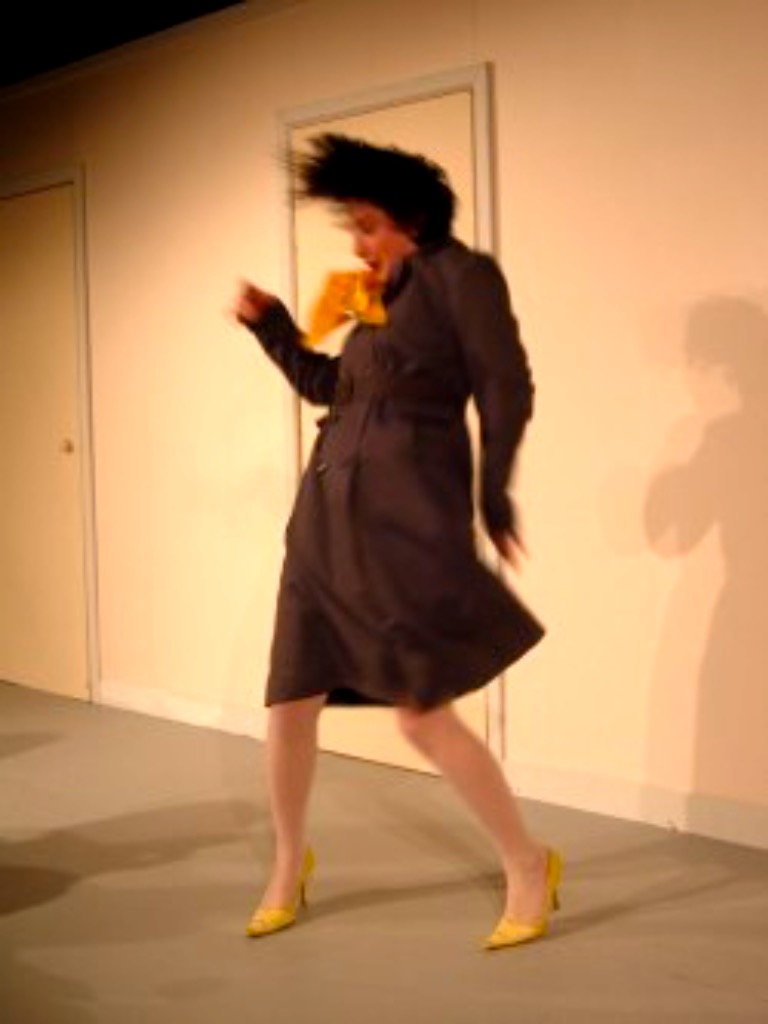I have to say I really love ‘In the Bosom of Roy’. It marked a change of gear in my writing and I loved watching it being performed by the actors. Around that time I wrote here about my impatience with theatre whose form was inappropriately coherent, given the lack of coherence in our everyday early 21st century experience. As a counter to this, I had in my mind an elusive vision of a theatre of fragments that ultimately hung together insofar as they would contribute to a fragmented whole. Themes would be apparent but the parts would remain discontinuous. The fragments would not just be a collection of any old random bits but represented the decomposing of many of the systems and beliefs that had once made us feel we were consistent subjects in a reliable environment.
Over the preceding forty years I had seen a great deal of experimental performance and I was familiar with many varieties of performative fragmentation. Much of the British progressive work was designed to find alternatives to narrative strategies found in mainstream performance and the novel. This work tended to favour a multi- or cross-disciplinarity enhanced by an increasingly sophisticated articulation of alienation, disenchantment and unstable identity. But times changed. If the work was to maintain currency it would have to take into account a complex of factors that had irreversibly metastasised from the local to the global. Tall order.

‘In the Bosom of Roy’ was, I think, the first piece I wrote that featured loud trance music introduced at the wrong moments. Most of my long and short plays had used music but invariably in order to intensify or complement mood. When electronic dance music began to emerge I found in it some of the most exhilarating experiences I had had since punk. I picked up scores of trance and hardcore CDs at charity shops and, as the century turned, amassed them in my very exciting iPod Classic, a white device closely resembling, in shape and size, what the portable wireless telephone would evolve into six years later.
I noticed that when I listened to the right kind of dance music I would sometimes see streams of performance imagery in my mind’s eye. Increasingly and perhaps not surprisingly, the images featured actors dancing as well as acting. While I am not a choreographer I do know what I like. I like watching just about anybody dance but there’s something about heavy pounding that brings out the best in many who consider themselves only modestly equipped in terms of a repertoire of shapes. The pounding attacks the body directly and solves, for some, the problem of making thoughtful aesthetic movement choices. On a good day the body will be taken care of.
Rather than use the dance music to energise a scene I envisaged the abrupt and uncomfortable eruption into a scene of music played so loud that nothing else could be heard. This would not discommode the performers so much as compel them immediately to break out of the acting mode in order to demonstrate their moves. The figures seen dancing were not dancing as previously established fictional characters. They had seceded from fiction but neither were they actors being themselves. They would stand downstage in a line abreast, a few feet from the front row, facing towards the audience, not acknowledging each other, just demonstrating dance.
This mode of demonstration could, I thought, be extended to the acting style. Instead of authenticity, along with its tiresome baggage of purported healing power, the actors would present actors presenting examples of acting. It would be possible to open up the seams that welded actor to character so that a small but disconcerting gap could be seen. Not so large a gap that the effect could be dismissed as bad acting but one which afforded a glimpse of artifice. This would not be a Brechtian effect but one which reflected the new styles of alienation burgeoning in a successful consumer society that supported the consciously performed presence rather than a less self-conscious version. The actors I was working with regularly on both short and long plays – Lydia Ayers, Jude Barrington, Gerard Bell, Gareth Brierley, Abigail Davies, Christine Entwisle, Martin Gent, Amanda Hadingue, Chris Newland, Barney Power, Mary Roscoe and Bernadette Russell – all acquired a distinctive declamatory style that simultaneously expressed the role and demonstrated it as a role.
The spectacle of actors dancing hard in your face with the volume up to 11 was, I found, intoxicating and moving. I found it so intoxicating and moving that I used it over and over. It suggested a world in which few experiences were not truncated by others, in which the personal was urgently and unpredictably invaded by forces that both erased it and defined it. The eruption of hard thumping and ecstatic breaks gave a context to the ‘drama’ that located it in a relentless, repetitive, machinic, merciless place. This was a place that was fundamentally frantic and panicked and could only offer a deliverance that was itself possessed of a transcendence that was superb to a fault.
2008
Go to the play script here.

